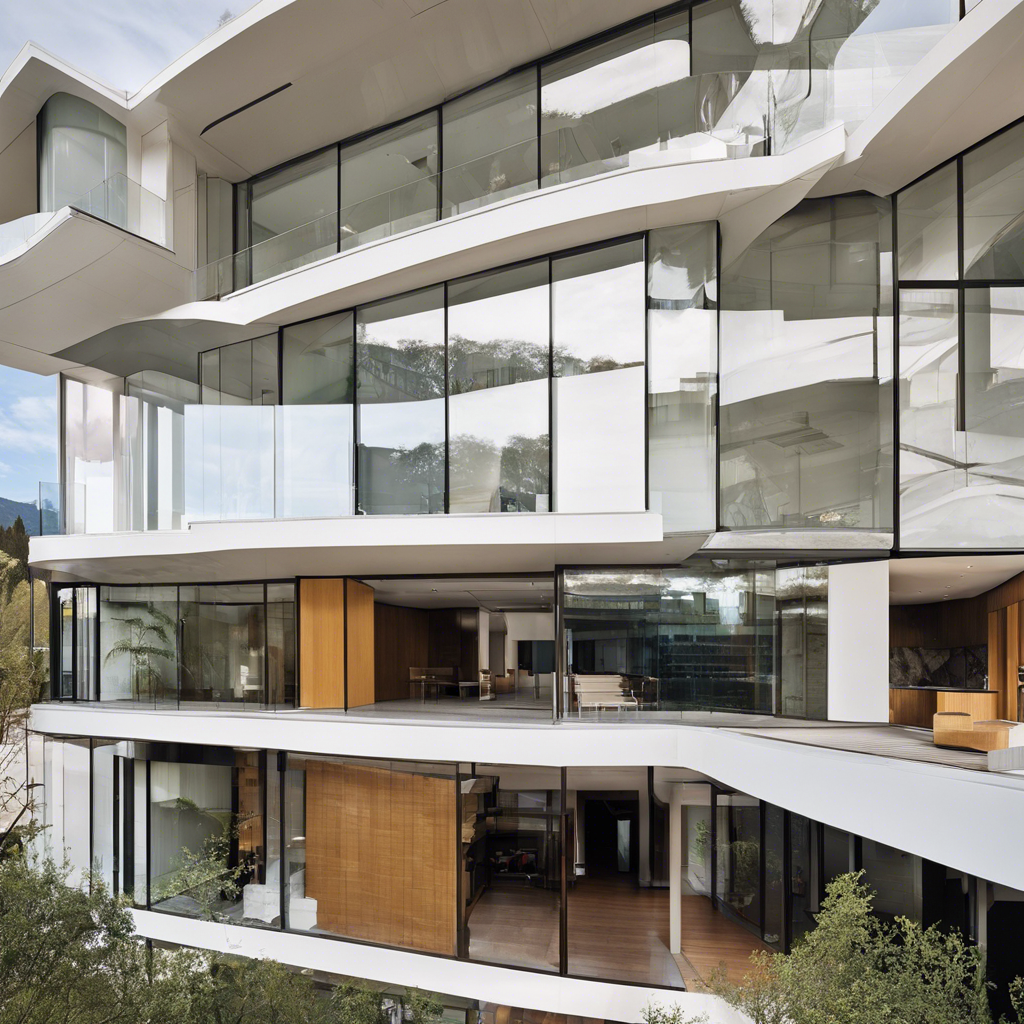Architecture has long served as a testament to human creativity and innovation, with buildings often transcending their functional purpose to become artistic statements in their own right. These architectural marvels, scattered across the globe, showcase the unique interplay between structure and design, challenging our perceptions of the built environment and inspiring us with their beauty and ingenuity.
One such example is the iconic Sydney Opera House in Australia. This UNESCO World Heritage Site, designed by Danish architect Jørn Utzon, is a masterpiece of expressionist architecture. Its distinctive sail-like roofs, crafted from precast concrete shells, seem to billow majestically over Sydney Harbour. The building’s organic form, inspired by the natural beauty of Sydney, has become an enduring symbol of Australia’s cultural heritage.
Moving to Spain, we find another architectural wonder: the Sagrada Família in Barcelona. This Catholic church, designed by the legendary Antoni Gaudí, has been under construction since 1882 and is anticipated to be completed in 2026. Sagrada Família captivates with its intricate Gothic and Art Nouveau fusion. The church’s facades, adorned with biblical scenes and symbolic sculptures, stand as a testament to Gaudí’s profound Catholic faith and imaginative genius.
The Louvre Abu Dhabi, designed by the celebrated French architect Jean Nouvel, is a modern architectural masterpiece. This museum, situated on Saadiyat Island, captivates with its intricate dome structure inspired by Arabic geometry and palm trees. Natural light filters through the dome’s intricate pattern, creating an ethereal effect within the galleries, a striking contrast to the stark desert landscape outside.
Chicago’s Aqua Tower, designed by Jeanne Gang of Studio Gang Architects, challenges traditional skyscraper design. Completed in 2009, Aqua Tower stands at 82 stories tall, its undulating balconies reminiscent of rippling waves on Lake Michigan. The building’s distinctive form, crafted from reinforced concrete, serves not only as a stunning visual statement but also helps to reduce wind loads on the structure, showcasing an innovative approach to sustainable design.
These buildings, and many others like them, push the boundaries of what is possible in architecture, challenging our expectations and inspiring us with their artistic vision. They serve as a reminder that architecture is not just about functionality but also about expressing our deepest cultural aspirations and aesthetic ideals.
Traveling to Paris, one encounters the Louvre Pyramid, a modern contrast to the historic Louvre Palace. Designed by I.M. Pei, the pyramid’s sleek glass and metal structure, completed in 1989, creates a striking entrance to the renowned museum. Below, a vast underground lobby provides a contemporary space for exhibitions, uniting old and new in perfect harmony.
The Guggenheim Museum in Bilbao, Spain, designed by Frank Gehry, is a masterpiece of contemporary architecture. Its curving titanium-clad forms and innovative use of materials have transformed the city, creating a cultural landmark that has come to symbolize the rebirth of Bilbao as a cultural destination.
In the heart of London, 30 St Mary Axe, affectionately known as The Gherkin, soars above the city’s historic skyline. Designed by Norman Foster, this commercial skyscraper stands at 180 meters tall. Its distinctive shape, inspired by the curved forms of a Gherkin pickle, is not just an iconic feature but also serves to provide structural stability and improved aerodynamic performance.
Santiago Calatrava’s Turning Torso in Malmö, Sweden, is a breathtaking example of innovative twisting architecture. This residential skyscraper, standing at 190 meters, consists of nine cubic volumes, each rotated 45 or 90 degrees around a concrete core. The design was inspired by a sculpture of a twisting human torso, challenging traditional notions of skyscraper design with its dynamic, sculptural form.
Beijing National Stadium, also known as the Bird’s Nest, designed by Herzog & de Meuron, served as the main stadium for the 2008 Summer Olympics. Its intricate steel beam framework, resembling intertwining twigs and branches, creates a stunning visual effect. The stadium’s unique design, inspired by Chinese ceramics and symbolic of nestling birds, has become an iconic symbol of Beijing’s modern architecture.
The Walt Disney Concert Hall in Los Angeles, designed by Frank Gehry, is a breathtaking example of stainless steel architecture. Its curving forms and distinctive stainless steel exterior create a dazzling display of light and shadow. Completed in 2003, the concert hall has become a cultural landmark, enriching the city’s artistic landscape and providing a world-class venue for musical performances.
The Milwaukee Art Museum, designed by Santiago Calatrava, is a stunning architectural landmark on the shores of Lake Michigan. The museum’s distinctive feature is the Burke Brise Soleil, a moveable sunscreen resembling a set of soaring wings, that opens up for incoming ships and provides shade during the day. This kinetic sculpture, crafted from steel and glass, transforms the museum into a dynamic work of art, captivating visitors and passersby alike.
These architectural marvels, each a testament to the creativity and vision of their designers, inspire and challenge our perceptions, reminding us that buildings can be so much more than just functional structures. They are artistic statements that shape our cities, reflect our cultural values, and inspire wonder in all who experience them.

